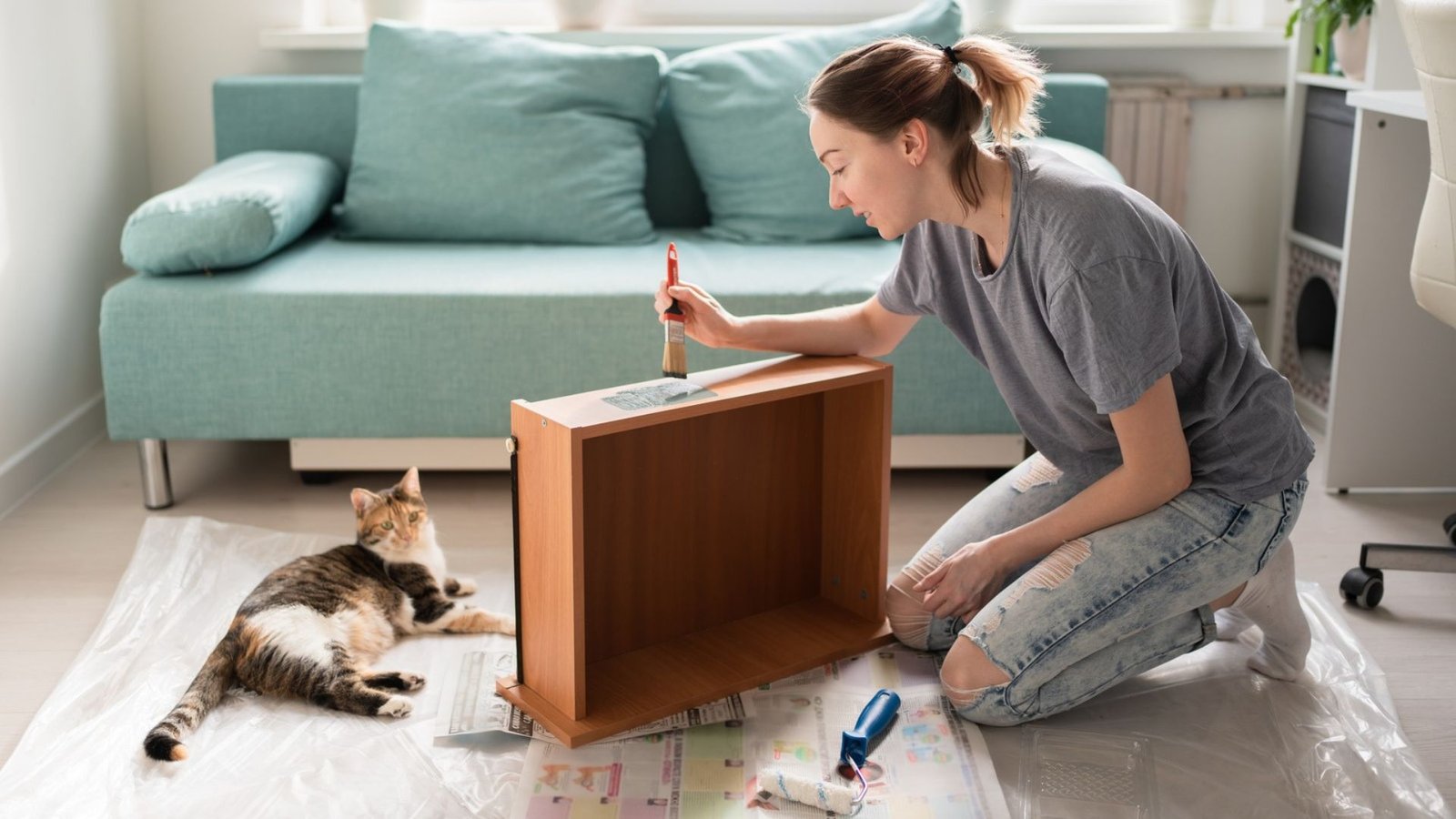|
Getting your Trinity Audio player ready...
|
Furniture adds functionality and aesthetic appeal to our homes, but over time, wear and tear can lead to common issues like scratches, dents, and loose joints. Fortunately, with some simple DIY hacks, you can easily tackle these problems and restore your furniture to its former glory. In this article, we’ll explore some easy and effective furniture repair hacks to help you maintain and extend the life of your beloved pieces.

Furniture Repair Hacks Easy Fixes for Common Problems
1. Fixing Scratches
Scratches often mar the appearance of wooden furniture, but they can be easily remedied with simple DIY techniques. For minor scratches, grab a walnut or pecan and rub it over the affected area. The natural oils in the nuts work wonders to fill in the scratch and seamlessly blend it with the surrounding wood. However, for deeper scratches that need more attention, opt for a wood filler or crayon in a matching shade. Apply the filler or crayon to the scratch, ensuring it fills the gap. Once dry, gently sand the area smooth to level it with the rest of the surface. Finally, apply a wood finish to restore the beauty of your furniture. With these straightforward steps, your furniture will look as good as new in no time.
2. Repairing Loose Joints
Loose joints are a frequent issue, particularly with older furniture items. To address loose joints, start by clearing away any old glue or debris from the joint using sandpaper or a chisel. Once the joint is clean, apply wood glue generously to the area. Next, firmly clamp the pieces together to ensure a tight bond while the glue sets. To reinforce the joint further, consider inserting wooden dowels or screws into the joint before applying the glue. This additional step adds extra stability and durability to the repaired joint. By following these straightforward steps, you can restore the structural integrity of your furniture and prolong its lifespan.
3. Removing Water Stains
Water stains often blemish wooden furniture, but you can banish them with a simple DIY solution. Begin by mixing equal parts vinegar and olive oil in a container. Then, apply the mixture generously to the stained area using a clean cloth or sponge. Allow the solution to sit on the stain for several hours or overnight, giving it time to work its magic. The vinegar works to lift the water stain from the wood’s surface, while the olive oil nourishes and revitalizes the wood’s finish. Once the allotted time has passed, wipe away the excess solution with a clean cloth, revealing a restored and refreshed wood surface. With this easy method, you can bid farewell to water stains and restore the beauty of your wooden furniture effortlessly.
4. Concealing Dents
Dents and dings often spoil the look of furniture surfaces, but there’s a simple way to conceal them. Start by moistening a cloth and placing it over the affected area. Then, set a clothing iron to medium heat and gently press it against the damp cloth. The steam created by the damp cloth and the heat from the iron will help to expand the wood fibres and lift the dent. Alternatively, you can use a hairdryer to apply heat directly to the dent. Once the area is warmed up, use a cloth or spoon to apply pressure and push the dent back into place. With either method, the dent should gradually disappear, leaving your furniture surface looking smooth and flawless once again.
5. Touching Up Paint
For furniture with painted surfaces, touch-up paint is a handy solution to hide chips and scratches. Always keep a small container of touch-up paint in a matching colour nearby for easy access when needed. When applying the paint, use a small brush or cotton swab to precisely target the damaged area. Take care to apply the paint evenly and blend it seamlessly with the surrounding surface to ensure a seamless finish. Once the paint has dried completely, gently sand the area to smooth out any rough edges. Finally, apply a clear coat to provide additional protection and enhance the durability of the repaired area. By following these simple steps, you can quickly and effectively touch up any imperfections in your painted furniture, restoring its appearance and prolonging its lifespan.
Conclusion
With these easy furniture repair hacks, you can address common issues like scratches, loose joints, water stains, dents, and paint chips to keep your furniture looking its best. By tackling these minor repairs yourself, you can save money on professional repairs and extend the life of your furniture for years to come. With a little creativity and DIY know-how, you can transform your furniture from tired and worn to beautiful and restored.
You will find the following information useful:
